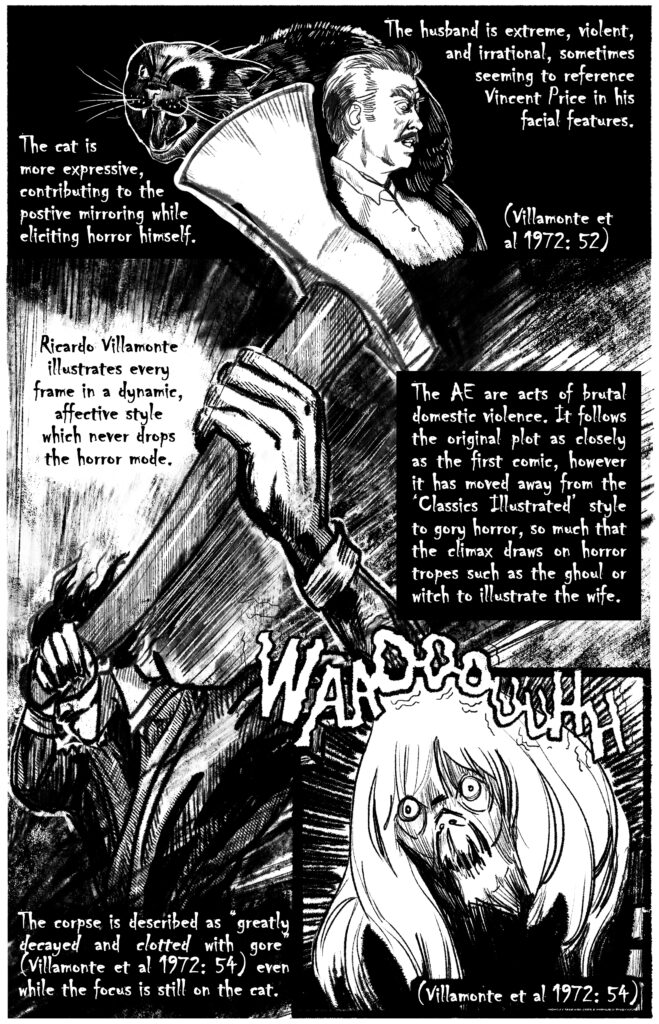
“Multimodal Mirroring in The Black Cat”
Few works have been adapted to comics as frequently as the short stories of Edgar Allan Poe. This research comic, illustrated fluidly in the styles of the comics being examined, proposes to focus on the function of mirroring (Carroll 1990) complicated within Lim’s framework (2007) for analysing intersemiosis in a multimodal text throughout a range of adaptations of Poe’s short story “The Black Cat” (1893). Featured in over forty comic book adaptations, this comic will consider adaptations from 1944 to 1974, and will reflect on the earlier illustrations of “The Black Cat” by Aubrey Beardsley (1895-96) and Harry Clarke (1919). Mirroring plays a different role in the composition of a horror comic than it does in film, and this is reflected in the page layout, the visual composition which communicates mirroring, and the multimodal reading of mirroring. While mirroring initially acts as an amplifier to the reveal of the wife’s body in final illustration, mirroring expands to other parts of the narration as the emphasis shifts to the horror of the character’s unhealthy psychological state (the murder of the wife being only a secondary focal point of this), and as the mode of horror shifts to accommodate the fears and anxiety of the time, mirroring, through the choices in adapting “The Black Cat”, provides a tidy case study of the history of horror comics as the adaptations move through late nineteenth century moral anxieties, to the era of psychoanalysis, to the emotive, atmospheric gore of 1970s horror comics.
Keywords: Adaptation, horror, mirroring, Edgar Allan Poe, comic books
In: Chamberlin, Barbara, Kom Kunyosying, and Julia Round, eds. Horror and Comics. University of Wales Press, 2025.
This collection investigates the evolution of comics and horror by analysing a range of approaches and traditions. International contributors explore how multiple aspects of comics (forms, cultures, histories) have contributed to the depiction and development of horror across many subgenres (folk horror, ecohorror, gothic romance and more); their chapters also show how horror has informed the development of comics across multiple periods, places and genres, from seventeenth-century broadsheets to newspaper strips, weeklies and contemporary graphic novels, spanning Brazil, Germany, Italy, Japan, UK and USA. By considering well-known horror comics alongside understudied ones, this book re-examines and re-energises established concepts, such as the abject, the Other and closure, applying them to diverse texts, contexts, authors and audiences, and demonstrating the potential of comics and horror to encourage innovations of form and content in each other.

